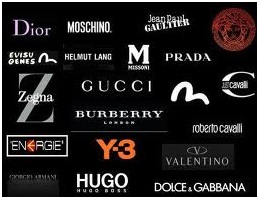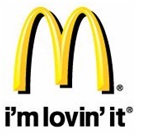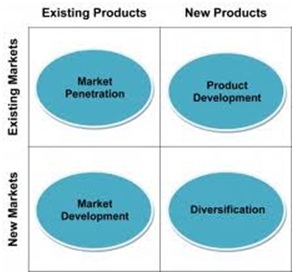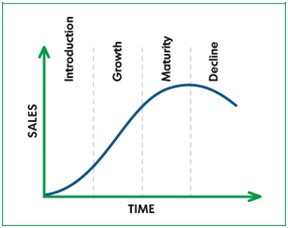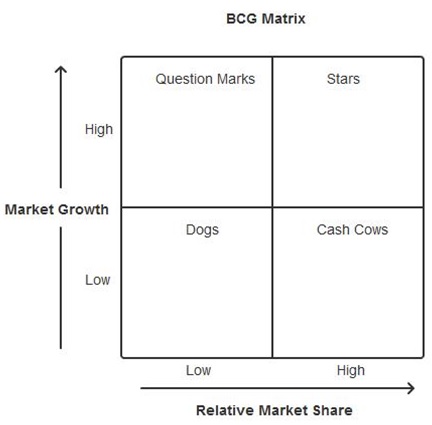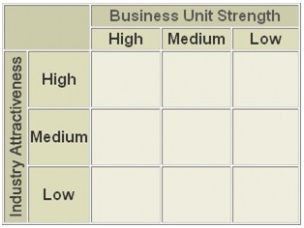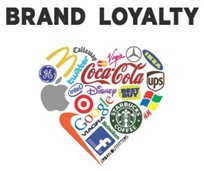|
 |
|
 |
Product strategy
A product is...
A bundle of customer benefits that are: 1. Tangible and intangible
2. Actual and perceived (what people think about the product as well as actually see).
3. Linked to the product producer’s business definition For example, Disney is in the entertainment business, so its products must entertain customers. A product may also be called a brand that is closely associated with certain “brand values” e.g. Disney means family entertainment. A company’s product mix (or product portfolio) is the different products it sells to its customers.
The world’s top 10 brands in 2013 were... 1. Apple 2. Google 3. Coca-Cola 4. IBM 5. Microsoft 6. GE (General Electric) 7. McDonald's (pictured right) 8. Samsung 9. Intel 10. Toyota (Source: Interbrand, the brand management firm)
How to have the best products
1. Think customer A product must provide better customer benefits than competitors (called product differentiation). Think about Theodore Levitt’s total product concept that splits a product into four parts:
a) generic product – the basic product (e.g. the water, sugar and distinctive flavouring of Coca-Cola).
b) expected product – the least a customer expects from the product (e.g. flavour, fizz and thirst quenching).
c) augmented product – gives customers what they think they need and the extras they expect (e.g. cool image and sex appeal).
d) potential product – anything that might possibly give a product customer appeal. A company must also consider how new and existing products can be sold to different customers (or markets), as shown by Ansoff’s matrix (see also corporate strategy).
This matrix shows four possibilities:
2. Think about the product life cycle (PLC) This shows a product’s sales revenue (and profits) at four different stages of its lifetime:
a) introduction
b) growth Highest sales growth but marketing costs still high.
c) maturity Profits are usually highest because the product is established with high sales and lower marketing costs.
d) decline Sales/profits fall.
A business should keep products in growth and maturity and axe/sell the ones in decline.
3. Use the BCG matrix (also called the Boston box) Named after its creator, the American management consultants, the Boston Consulting Group, it evaluates products in terms of market growth and market share.
It says that companies should have a balance between cash cows and stars. This will become clear when we look at each product category:
a) cash cows (high market share, low growth)
Stars are vital because they are tomorrow's cash cows -see below.
b) stars (high market share, high growth)
c) question marks, or problem childs (low market share, high growth) These should be either
d) dogs (low market share, low growth) Sell!
4. Use the General Electric (or McKinsey) matrix This examines products in terms of industry attractiveness and business strengths: The best products (in top left quadrant) are where the product seller or maker:
5. Use your brand effectively Like a product, a brand is a bundle of actual and perceived customer benefits that are
tangible (e.g. quality) or intangible (e.g. image). The aim is to create brand loyalty i.e. people keep on buying because of its great benefits (and so reputation). A product’s packaging can help to promote the brand with the packaging design, brand name and logo. Brand extension is selling a new product under the same brand name (e.g. Apple).
Key quotes explained
“You can have any product so long as it’s black” - Henry Ford (talking about his Model T car, pictured right) This is called product orientation i.e. selling what you can make. Henry Ford could do this, because his prices and costs were much lower than competitors (due to his revolutionary mass production factory). But in today’s highly competitive world organizations must always make products that customers want (customer orientation) In the 1920's General Motors became more customer oriented and took over from Henry Ford as number one.
“We’re not in the coffee business serving people, we’re in the people business serving coffee” - Howard Schultz (founder and boss of Starbucks, pictured right) You have to be creative and imaginative with products. For example, Starbucks doesn’t just sell coffee, it sells an experience for people to enjoy. So a product should be thought of as a bundle of customer benefits and solutions. “People don’t buy things they buy solutions to problems”, the American marketing professor, Theodore Levitt, said.
“The product is the most important thing” - James Dyson (English inventor of the bagless vacuum cleaner, pictured right) The best advertisement for a company is its product. “Our belief was that, if we kept putting great products in front of customers, they would continue to open their wallets”, said Apple’s co-founder, Steve Jobs.
Best books
Theodore Levitt (pictured right), The Marketing Imagination (1983) Business success depends upon the “marketing imagination” – finding creative and imaginative solutions to customers’ problems. So vital considerations are:
(For more detail see The Marketing Imagination in the Business Books section)
Alvin Toffler (pictured right) , Future Shock (1970) People want quality, style and brand image. So organizations must become “experience makers” and sell an experience to enjoy (e.g. shops should be fun). (For more detail see Future Shock in the Business Books section) |
|
|
||
|
|
|
||
|
||
| Copyright © wisdomtowin.com All Rights Reserved | ||
|

